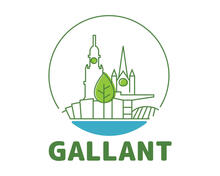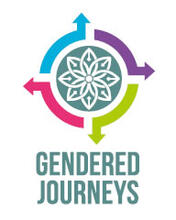GINCO Tools & Training has launched a survey amongst Grundtvig in-service training course organisers as to define and prioritise the competences needed to organise a quality Grundtvig IST course. They were also asked to define their training needs. Based on the results of this survey, the priorities set by the Lifelong Learning Programme and based on the principles of the EU Commission study on ‘Key Competences for Adult Learning Professionals’ the GINCO T&T team has come up with 41 competences spread over 8 competence areas.
These competence areas are the following:
- Application of innovative didactics and competence oriented approaches
- Quality care and self-evaluation
- Validation of learning outcomes
- Promotion and marketing
- Attention to EU dimension
- IICT use
- Providing social and professional support
- Management and organisation
GINCO competence profile for Grundtvig course organisers
A) Organising competence oriented learning.
Involves the competences to:
1 define and formulate learning outcomes in terms of competences
To describe competences in terms of knowledge, activities and attitudes
2 identify the needs of the learners
To help learners articulate their needs/learning styles
To assess the needs of the participants
3 translate competences into learning activities
To design the course in terms of tasks, roles and actions
To relate the course to professional activities
4 create an open learning environment
To supply the necessary resources for an open educative setting
To create the open social environment for the course
5 monitor learning
To support interaction with other participants and trainers
To promote reflection on the learning
6 moderate
To distribute attention equally among participants
To acknowledge input from participants
B) Quality care and evaluation
Involves the competences to:
1 design the evaluation process
To define the goals for the evaluation of the course
To create a time schedule for the evaluation
2 manage the evaluation process
To create the right atmosphere and conditions for evaluation
3 define the right indicators and gather the right information
To describe performances linked to quality levels
To create instruments for collecting information
4 analyse and interpret the data
To process the collected data
To discuss the results, interpret the data
5 act according to the outcomes of the evaluation
To report correctly to all people involved
To create the right conditions for change
C) Validation of the acquired competences
Involves the competences to:
1 describe the course and learning context
To describe content, methodology, context
2 create the inventory of competences to be acquired
To sum up the competences related to the learning activities at the course
To characterize the competences
3 create reference systems and instruments
To describe the acquisition levels of the competences involved
To create assessment tools to gather information
4 assess, to distinguish between stages of acquisition, to apply level indicators
To observe, interview, discuss, ask
5 evidence, communicate the result + consequences to the learner
To create a certificate for the participants
To report on the acquired competences in the certificate
6 relate to the wider system of qualification
To link with NQF, EQF or other official framework
D) Public relations and outreach
Involves competences to:
1 network at all levels
To promote and advocate the course towards decision makers
To network (potential) course participants
2 raise funds
To broaden the target group for the course
To reach other financial sources
3 promote and market the course
To make publicity for the course
To analyse - and respond to - the needs of the market/target groups
E) Attention to the EU dimension
Involves competences to:
1 design the course to serve multinational application opportunities
To develop products that can be used in many training settings
To help develop competences that are relevant in other national education systems
2 create multinational certification relevance
To link the IST training to official certification organisations
To create certificates that are linked to official national or European frameworks
3 use the local situation for cultural and didactic purposes
To link course activities with local training organisations
To include local cultural elements for didactic purposes
4 link to European education priorities
To pay attention to European education priorities
To link up with European LLP opportunities
5 promote the multinational synergy in the group
To include input from participants from different countries
To further multinational networking in the group
F) Appropriate use of ICT
Involves competences to:
1 make optimal use of ICT as a means for communication and networking
To manage an e-forum
To use social media for networking the (ex) course participants
2 use ICT as a component of teaching and learning
To work in an e-learning environment for pre and post course activities
To use internet based materials for teaching and learning in the face to face phases
3 use ICT as a device for organizing the course
To develop an internet resource base for the course
4 develop your own ICT competence
To learn through and about ICT based teaching and learning
5 instruct others on how to make optimal use of ICT
To help course participants create internet based lessons
To transfer ethics for ICT use
G) Providing social and professional support
Involves competences to:
1 provide personal and social mentoring and coaching
To motivate participants to take part
2 give personal emotional support
To help participants feel well in the group
3 to manage group dynamics
To solve conflicts in the group
4 support the learning process
To advice participants on their learning steps
5 provide professional consultancy and counselling
To contribute to transfer of learning outcomes into the home situation
To advice on perspectives for future carrier
H) Management and organisation
Involves competences to:
1 manage international administration and paper work
To manage grant based finances
2 link with the home organisation and staff
To include own staff in the course development
3 administer accommodation and logistics
To book accommodation
To organise the space and materials for course activities
4 create and manage an international team
To contact and book international trainers and speakers
5 plan and schedule the course
To insert the course in the course data base
6 develop the course learning plan
To design learning activities
GINCO is a European wide network for improving professional development of adult education staff. In the network we share expertise, create and share useful material and enhance communication and cooperation in order to improve the quality of in-service training courses and of Grundtvig IST courses for adult educators.
The network has been organising international conferences, webinars, training days etc. on quality aspects and validation of IST courses. GINCO also installed a Quality Award for Grundtvig courses. All this material is downloadable from the network website: www.ginconet.eu
- Visit the document library: http://www.ginconet.eu/content/document-library
- Or look at the GINCO Award video (7 min.): http://www.ginconet.eu/content/ginco-awards-2012
- You can find Grundtvig course organisers on the GINCO map: http://www.ginconet.eu/ginco-network
- You can register as a Grundtvig course organiser: http://www.ginconet.eu/user/register
It’s never too late to learn.
Guy Tilkin
GINCO T&T coordinator
Landcommanderij Alden Biesen
Discussion topics:
- Log in to post comments













Latest Comments